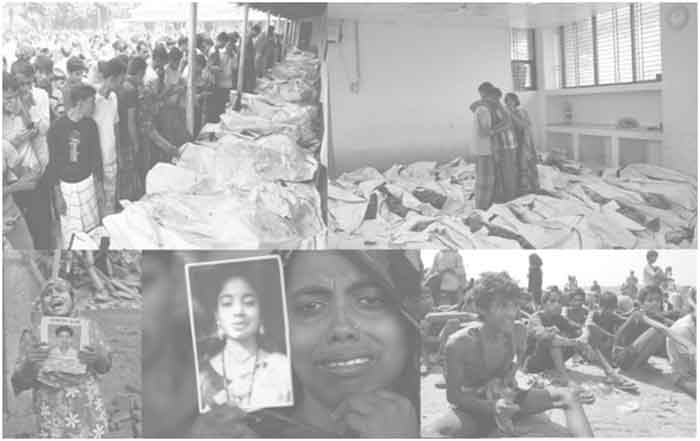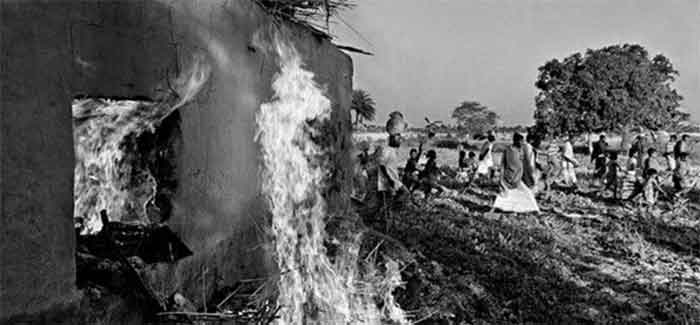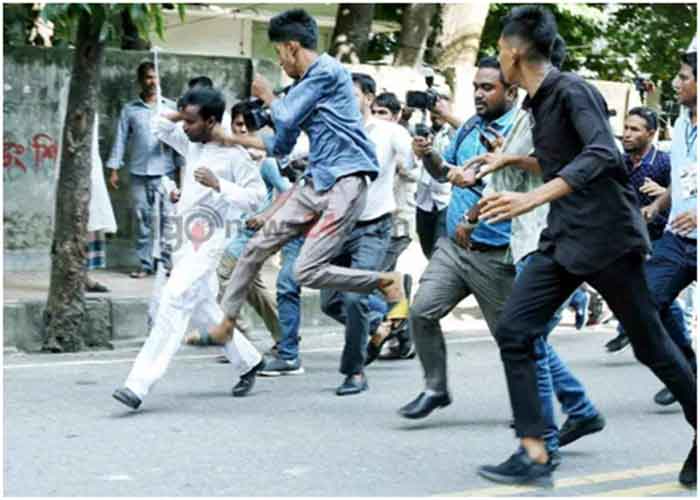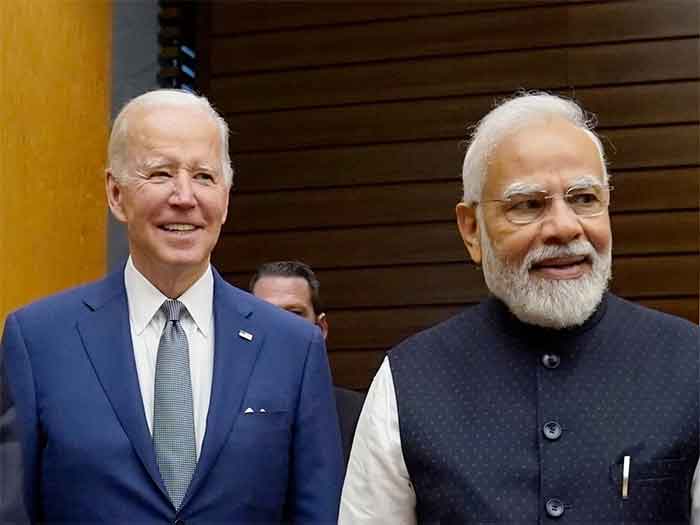Some facts for some ‘secular protestors’

Bangladesh is so near and so far, and the border, though we hear it is very porous, is also very opaque or even illusive or hallucinating, thanks to the almighty media, especially the ‘social’ media like Meta-FB, WhatsApp-University, etc. If asked what happened there most will perhaps reply attack on Hindus, on Durga Puja this year at Comilla, on ISKCON temple, and if news of other varieties are asked, then replies would be cow-smuggling, illegal-immigrants, Islamic-terrorists, and, then cricket will also be a topic; of course a less number of people will ask whether Hilsa (fish) will come, they know February 21 too and Bangla Bands and also some other popular singers, perhaps some can tell Shahbag movement, Taslima Nasrin, and Atheist Bloggers, and still lesser number of people will remember March 25, December 16, Humayun Ahmed, and so on.
Those who frantically shouted about Hindu population % decreased down to only 8.5% of total failed to mutter many aspects, to start with only two (out of many) may be cited: (i) absolute increase in population of all people of all communities and (Hindus grew over 1.1 million in between 2011 and 2001, and Muslims over 24 million and others about 0.3 million) (ii) why Hindu population ‘growth rate’ is so low and volumes of research done on this same issue in Bangladesh, again please note there are many other unpleasant questions about which no such loud protests emerge from those very critics.
Table 1: Population of Bangladesh, Total, Muslim, Hindu and Others
| Census year | Census enumerated population (in 000) | ||||||
| Total | Muslim | Muslim % | Hindu | Hindu % | Other | Other % | |
| 1951 | 41933 | 32227 | 76.854 | 9239 | 22.033 | 467 | 1.114 |
| 1961 | 50840 | 40890 | 80.429 | 9380 | 18.450 | 570 | 1.121 |
| 1974 | 71478 | 61039 | 85.396 | 9673 | 13.533 | 766 | 1.072 |
| 1981 | 87120 | 75487 | 86.647 | 10570 | 12.133 | 1063 | 1.220 |
| 1991 | 106315 | 93881 | 88.305 | 11179 | 10.515 | 1255 | 1.180 |
| 2001 | 124355 | 111393 | 89.577 | 11608 | 9.335 | 1354 | 1.089 |
| 2011 | 149772 | 135394 | 90.400 | 12731 | 8.500 | 1647 | 1.100 |
Source: Bangladesh Census Reports
Table 2:
| Census year | Muslim | Hindu | Christian | Buddhist | Others | Total |
| Percent of religious groups | ||||||
| 1951 a | 76.9 | 22.0 | 0.3 | 0.8 | 0.1 | 100.0 |
| 1981 | 86.5 | 12.3 | 0.3 | 0.6 | 0.3 | 100.0 |
| 2011 | 90.4 | 8.5 | 0.3 | 0.6 | 0.1 | 100.0 |
| (a) Number (in millions) | ||||||
| 1951 a | 33.99 | 9.72 | 0.13 | 0.35 | 0.04 | 44.24 |
| 1981 | 77.85 | 11.07 | 0.27 | 0.54 | 0.27 | 90.00 |
| 2011 | 135.4 | 12.73 | 0.45 | 0.90 | 0.15 | 149.8 |
| (b) Annual growth rate (%) | ||||||
| 1951 →1981 | 2.8 | 0.4 | 2.4 | 1.4 | 6.4 | 2.4 |
| 1981 →2011 | 1.8 | 0.5 | 1.7 | 1.7 | -2.0 | 1.7 |
| 1951 →2011 | 2.3 | 0.4 | 2.1 | 1.6 | 2.2 | 2.0 |
Source: Hindu Population Growth in Bangladesh: A Demographic Puzzle
M. Moinuddin Haider, Mizanur Rahman Nahid Kamal
icddr,b (https://www.icddrb.org) Mohakhali, Dhaka, Bangladesh
Carolina Population Centre, University of North Carolina at Chapel Hill, USA
No, Pakistan’s non-Muslim population didn’t decline from 23% to 3.7% as BJP claims, Mukesh Rawat, New Delhi, December 12, 2019
As to “why Hindu population ‘growth rate’ is so low” there are researches by Medicos and Health Personnel who have detailed their findings, interested persons should find them and read them if they really want to know. This paper focus on some other grave issues, issues that are carefully kept out of discussion, some of which might have some bearing with population issues however.
But how do the people of Bangladesh live? Bangladesh is at no. 8 position in World’s Most Populous countries list with more than 16 crores population, just behind China, India, USA, Indonesia, Pakistan, Brazil and Nigeria. For 16 crores. What do they eat and how, and dress up, and live in some place called ‘homes’, what do they do for a living, and how are their lives, such are questions never pondered or never bother those, because to them Islamic extremism / terrorism vs secularism is almost the only problem aunting Bangladesh now? Otherwise, how can one explain their silence regarding factory fire in a food-product fruit-juice producing company very ear to Dhaka that burned to death more than 50 workers in July? Or in April when police shooting killed 5 workers and injured 15 others gravely in a powerplant that was being built at Banskhali and in retaliation the workers put the factory on fire? On the same spot, 5 years ago, police fired killing many to forcefully evict people and acquire land for the capitalists to build powerplant. Or this news in July – ““Another tragedy @ #Mediterranean Sea. At least 17 migrants drowned in a shipwreck off #Tunisia as they tried to cross to #Italy from #Libya. More than 160 have been saved by the coast guard. Tunisia Red Crescent provided them with food & medical support,””
Do our Caste_Hindu-secular-anti-Islamic-fundamentalist-terrorist friends bother that little piece of news published just 5 days before that Koran and Hanuman episode in a Comilla Durga Puja Mandap (presence of a Hanuman idol in Durga puja is not at all ‘usual’ though): ““I had tried to commit suicide thrice, but luckily I survived,” Sajib said. “I have not sat around like this in four years. I used to earn money by doing a part-time job and providing tuition [before the pandemic]. I just could not bear the psychological pain,” he added. Four university students took their lives in September alone. Aachol Foundation, in another survey, found that 151 students committed suicide in Bangladesh between March 17, 2020 and June 4, 2021. Of them, 73 were school students, 42 university and medical college students, 27 college students and 29 madrasa students.” – reports Nawaz Farhin Antara. Covid and the rise in suicidal behaviour in youths, Nawaz Farhin Antara, October 9th, 2021.
It is really strange. So many factory accidents, factory fires and factory collapse killing fields, only in this century thousands and thousands died, the agony of hundreds of thousands of jute mill workers and millions of textile workers, many of who are women, and yet there were no such loud protests like Shahbag ones regarding those. Worker-Peasants-Lives do not matter to those intelligentsia? Before going to how people are living (and/or dying) in Bangladesh after decades of independence earned by a bloody war, it would perhaps be of interest to see this strange behavioural pattern of the social-movement sector, this Bangladesh intelligentsia, which laudably demonstrated to the world that the secular rich cultural tradition of Bangladesh is still alive.
In Chittagong, thousands of supporters of an Islamist group that accuses Modi of alienating minority Muslims in India streamed out of mosques after prayers to register their protest against his visit, police official Rafiqul Islam said.
Mohammad Alauddin, said a Chittagong hospital had received eight people with gunshot wounds, adding: “Among them four succumbed to their injuries.”
He identified the dead as three students and a tailor.
4 killed as police in Bangladesh clash with protesters during PM Modi’s visit
Mar 26, 2021 09:05 PM IST
These are also students. Perhaps they were mostly Madrasa students. And they are on the increase.
Figure 1: Bangladesh – Rise in number of Madrasa Students in +2 Level (equivalent to Higher Secondary)

Source: Education Sector Analysis (ESA) For Bangladesh
EDUCATION SECTOR ANALYSIS (ESA) FOR BANGLADESH Approved Version (under editing process) 13 April 2020
Rafida Ahmed Banya, survivor of the attack on her and Avijit, the slain scientist and blogger, said in a recent interview in a Dutch news paper analysed some disturbing trends in Bangladesh. Reading at least a part of that interview will be very necessary for further probe, a part of which is italicised by this author so as to draw due attention:
“Secularism, one of the four fundamental principles of the Bangladeshi constitution, is being scrapped after several military coups. Army officer Ziaur Rahman replaces it with “absolute faith and trust in Allah Almighty.” Not long after, his successors proclaim Islam the national religion of Bangladesh.
“Madrassas are rapidly emerging schools where only Islamic teachings and the Arabic language are taught. It will become the standard primary education in Bangladesh.” Ahmed, who in her youth attended a secular girls’ school where a headscarf was a rarity, blames the changes on international political interests.
“Schools and mosques were built on a large scale with money from Saudi Arabia, on behalf of the United States. During the Cold War, they wanted to prevent the popular communist movements from gaining strength in Bangladesh. Wahhabism, an ultra-conservative movement within Islam from the Gulf States, was exported through those schools. The lack of secular education has brainwashed entire generations during that period – that’s where today’s extremism was born.” [“Scholen en moskeeën werden op grote schaal gebouwd met geld uit Saudi-Arabië, in opdracht van de Verenigde Staten. Die wilden tijdens de Koude Oorlog voorkomen dat de communistische volksbewegingen aan kracht zouden winnen in Bangladesh. Via die scholen werd het wahabisme geëxporteerd, een ultraconservatieve stroming binnen de islam uit de Golfstaten. Door het ontbreken van seculier onderwijs zijn hele generaties gehersenspoeld tijdens die periode – het extremisme van nu is daar geboren.”] After an attempt on her life, activist Rafida Bonya Ahmed found solace in atheism [Na een aanslag op haar leven vond activiste Rafida Bonya Ahmed troost in atheïsme]
Here also there is footprint or fingerprint of US imperialism as Rafida Banya elucidated, but is often missed by many of the so-called secular-intelligentsia. Well, the USA or Saudi or UAE might be a dreamt destination for many, but can this explain the near-silence of this important aspect while protesting Islamic-fundamentalism-extremism as manifested in Bangladesh today?
And what happens in the Higher education sector, the colleges and universities? These are almost no-go places or the majority, i.e., the bottom 60% – 75% of the population.
Figure 2: Bangladesh – Economic Background of Students in Colleges and Universities

Source: Bangladesh Tertiary Education Sector Review Skills and Innovation for Growth, World Bank Study
Very weakened position of revolutionary workers-peasants movement, the continuing low ebb after the ‘fall of actually existing socialisms’, the rise of imperialist sponsored ideas of end-of-ideology, clash-of-civilisation and etc along with the class-position of the students of higher education might be reasons behind the selective enragement of the intelligentsia, though it may happen that some students protests are taking place regarding crushing exploitation on workers and peasants in Bangladesh but the media are hiding those. Otherwise, how can a student not see even non-economic oppressions within the society!
Feminists could well protest regarding this point: early marriage of girls in Bangladesh, how dreams of girls are either shaped or crushed, chained forcefully. If 60% of girls are forced to marry and enter ‘family life’ before becoming ‘adult’ 18 years old, how can she enjoy what a Bengali popular poem expresses as: “আঠারো বছর বয়সের নেই ভয় / পদাঘাতে চায় ভাঙতে পাথর বাধা, / এ বয়সে কেউ মাথা নোয়াবার নয়-/ আঠারো বছর বয়স জানে না কাঁদা।” [18-year age does not have fear, wants to smash stone-walls kicking, this age does not surrender, this age does not know crying. — Sukanta Bhattacharya, a Marxist activist poet, died of tuberculosis at the age of 20.]
Figure 3: Bangladesh – How early the girls are married off.

Source: Education Sector Analysis (ESA) For Bangladesh
In 2018, for instance, percentage of female students in B.Ed.-Law-Medical etc courses was 46.00, that in Masters of Engineering and technology 24.76, and in Masters Degree in other general subjects 33.95. (Interested readers may compare this figure with those of Algeria, for instance.)
Decrease in % of Hindus in population is of course alarming, but what about some other increases and decreases that are threatening Muslims, Hindus, all? Why this is NOT a point of that much concern? Do the urban social-movement protestors do not have things I common with the commoners? Let us visit more examples.
Though figures show that GDP growth has accelerated in recent years, job growth has slowed and real wage growth has been sluggish as the high growth couldn’t create sufficient jobs. The country is witnessing a phase of what is termed jobless growth as poor people are not getting income-generating work. This has resulted in slow progress in poverty reduction amid rising inequalities. The public expenditure on education and health as a share of GDP has declined in recent years. Such low spending does not help improve productivity of workers and is not consistent with the effort to reduce poverty and inequalities. There is also an increasing inequality of opportunities, particularly to access healthcare, education, financial services and social protection. …In Bangladesh, income inequality seems to be growing at an alarming rate. A small section of society enjoys most of the country’s wealth, depriving the larger sections. Income share held by the highest 10 per cent increased from 21 per cent in 1984 to 27 per cent in 2010. Income share held by the lowest 10 per cent declined from 4.13 per cent to 3.99 per cent. [Growing income inequality in Bangladesh causes concern, Jehangir Hussain, August 02, 2021 21:28:06]
According to the survey, the average monthly income hardly moved for most households between 2010 and 2016, except for two groups: Over that period, the richest households saw their monthly income increase by nearly a quarter to over Tk 77,000. In contrast, the poorest households saw their monthly income decline by a third to less than Tk 700. [OP-ED: Where does Bangladesh stand on the poverty and inequality front after 50 years of independence? Jyoti Rahman, Published at 12:32 am February 26th, 2021]
The research has attempted to show that subsistence protests were relatively rare in Bangladesh in 2007–12 – at least, a reasonable informed observer would have expected more of such action, because of the exposure of the population to the global price spikes and because of the country’s rich tradition of unruly politics and organised civil society action. From our close analysis of those protests that did occur, we learned the following:
- Food price rises, no matter how dramatic, did not produce riots; instead, specific outrages linked to corruption or rights abuses were the triggers, in contexts where rapid cost of living rises were leading to simmering discontent.
- Some groups were particularly acutely exposed to these price rises, as they were unable to: a) benefit from price rises as producers; or b) protect themselves against price rises as urban consumers, dependent on food markets for their survival. Some of these groups were particularly exposed and without recourse to official pay rises or effective upward pressures on wages (such as the RMG workers).
- Occupational and spatial concentration enabled organisation. Groups that protested did not organise just for that purpose, but had prior histories of mobilisation. … [Hossain, N. and F. Jahan (2014) ‘The food riots that never were: the moral and political economy of food security in Bangladesh’. Food Riots and Food Rights project report. Brighton/ Dhaka: Institute of Development Studies/University of Dhaka. www.foodriots.org]
No arable land will be there after 2050 if shrink continues: Environment DG
Farmland is declining at a rate of nearly 1% every year. Speaking as the special guest, Ziaul Hasan, secretary of the environment, forest and climate change ministry, said Bangladesh had 9.15 million hectares of arable land in 1982-83, which fell to 8.02 million hectares by 2017-18. Nearly 69,000 hectares of arable land in the country is lost to non-farming purposes every year. [https://www.tbsnews.net/ TBS Report, 04 March, 2021]
Bangladesh faces huge challenges in achieving food security due to its high population, diet changes, and limited room for expanding cropland and cropping intensity. The objective of this study is to assess the degree to which Bangladesh can be self-sufficient in terms of domestic maize, rice and wheat production by the years 2030 and 2050 by closing the existing gap (Yg) between yield potential (Yp) and actual farm yield (Ya), accounting for possible changes in cropland area. The results of this analysis have important implications for Bangladesh and other countries with high population growth rate, shrinking arable land due to rapid urbanization, and highly vulnerable to climate change. [Can Bangladesh produce enough cereals to meet future demand? J. Timsina, J. Wolf, N. Guilpart, L.G.J. van Bussel, P. Grassini, J. van Wart, A. Hossain, H. Rashid, S. Islam, and M.K. van Ittersum, Agric Syst. 2018 Jun; 163: 36–44. doi: 10.1016/j.agsy.2016.11.003]
- Well, if the above seems difficult to conceive, let us get some general picture of Bangladeshis from Socio-Economic & Demographic Report, National Report no. 4, Bangladesh Bureau of Statistics, 2015.
8% homes cook food burning wood and 51.2% by burning straw/leaf/cow-dung-cake in the year 2011. - Only 26.1% of the homes have brick-cement walls, 40.6% have Corrugated Iron sheets (commonly called ‘tin’) as walls.
Concrete roofed are only 10.7% of all houses. - Floors are of mud in 74% cases.
- Average household size is 4.35. (Oh, then what about Muslims having 4 wives and 10 children!)
- Per 1000 population, 52.6 migrate rural-to-rural, 222.9 migrate rural-to-urban.
Some more social and economic data are given in another article of this author that appeared in Frontier Weekly. [Bangladesh Behind the Blinds, by Sandeep Banerjee, Frontier Weekly, Vol. 49, No. 9, Sep 4 – 10, 2016, One such data set shows clearly there there are two countries within this single Bangladesh:
Table 3: Bangladesh – Few Social Indicators for the Poorest & Richest Quintiles, 2014
| Indicators | Poorest 20%
Lower Bangla |
Richest 20%
Upper Bangla |
| Child malnutrition rate | 50 | 21 |
| Infant mortality rate | 62 | 30 |
| Total fertility rate (How many children a woman gives birth to in her total fertile life) | >3 (3.1) | <2 (1.9) |
| Teenage mothers as % of teenage females | 42 | 19 |
| Percent births attended by skilled health staff | 12 | 64 |
| Primary school completion rate | 65 | 97 |
Source: Inequality in Bangladesh, Azizur Rahman Khan,
While we wrap up this introduction to the Golden Jubilee year of Bangladesh Freedom Fight Victory as an answer to superficial critics another fiery news poured out of Bangladesh.
“Dhaka. December 14, 2021. Five workers killed at Bogura factory fire. Five workers lost their lives in the plastic factory fire that broke out in Santahar upazila of Bogura district on Tuesday. The fire broke out in Habib intersection area on Naogaon-Tilokpur road in Bangladesh around 11 am. Confirming the incident, district Fire Service and Civil Defence deputy assistant director, AKM Morshed said five firefighters’ units were able to bring the fire under control after about two hours of frantic efforts. The cause of the fire is not known yet, the fire official added. Santahar municipal Mayor Tofazzal Hossain Bhuttu, who is also the owner of the plastic factory, said the incident has damaged goods worth around Tk 30 crore.” One thing will perhaps never come out in the media – the doors of the factory were locked and so the burning workers could not come out. Of course, 5 or 7 lives are nothing, Tk 300,000,000 is more worthy. Incidentally, the quoited news emanated from an Indian news source, not Bangladeshi. [http://www.uniindia.com/bangladesh-five-workers-killed-at-bogura-factory-fire/world/news/2592534.html] On November 5, 2021, in another factory fire 5 workers were killed as per newspaper reports.
The fruit juice company where fire killed 52 workers in July, started giving compensation to families of victims. Life of 1 worker ≡ 2 Lakh Tk ≡ 2331.92 $ USD or 2069.53 €. Families must come and sign some stamped paper and remain silent, that is all. Who will bother about such cheap life, even if that burnt worker is Hindu or Muslim or Christian?
And nobody likes a Bangladeshi if s/he is a toiler, typically an illegal immigrant, ‘eating up country’s resources’ – isn’t it. So, nobody bothered such news like this one: Monday, 29th December 2008 || 300 migrants feared dead off remote Indian islands| Reuters
About 300 illegal migrants, mostly Bangladeshis, are feared dead after they jumped from a boat and tried to swim ashore in India’s remote Andaman Islands, the Indian coast guard said yesterday.
A senior coast guard official said they had rescued 88 people from a small boat near Little Andaman Island, about 90 kilometres south of Port Blair … … “Around 300 of them reportedly jumped into the sea hoping to swim across to the shore,” Mr Sharma told reporters in Port Blair. “While all of them are feared dead or missing, search operations are still ongoing,” he said.
A survivor told officials (that) there had been 412 men, aged between 18 and 60, on the boat, which had little food or water and only a plastic sheet for a sail. … the men told police seven others had died at sea and their bodies were dumped overboard … the men had left Bangladesh bound for Malaysia in six motorized boats about 45 days ago … One survivor, identified as Mohammad Ismail Arafat, said he and others had paid a Bangladeshi agent for promised jobs. “We were left to the mercy of God… after drifting for 10-15 days when finally, we saw a lighthouse, many jumped into the water,” …
These “illegal immigrants” sold all their precious family properties like utensils, their wives’ silver ornaments [they cannot afford golden ones]. Each one could amass a sum of about $ 200-250 to pay the job agents, so poor were those Bangladeshi fishermen. They never fancied solvency. Just a job in the Malaysia to make both ends meet was their ‘dream’.
But unluckily their boats were intercepted by the Thai Navy, remember – not an armed force of some Islamic Country, not a single Muslim terrorist was there to curse for the cruel act or their ill fate! And the men in milky white uniforms gave the horrid ‘punishment’. They tugged motor-less boats packed with Bangla fishermen deep into the sea, gave them little food and water and left those hundreds at Nature’s mercy.
By the way, Thailand is also a Buddhist majority and Buddhist ruled country, just like Myanmar.
But ladies and gentlemen, if you continue hiding these facts and simultaneously only criticise religious fundamentalism and extremism present in Bangladesh, poor toilers have every right to doubt impartiality and integrity of investigations you produce, that your studies are silently obscuring the ‘masters’ of Bangladesh, the class rule there, the exploitation of Bangladesh by bourgeoisie and imperialism, the religious obscurantists are the tools at the hand of those masters, and it amounts to distortion of history too.
The author is an activist who writes on political and socioeconomic issues and also on environmental issues. Some of his articles are published in Frontier Weekly. He lives in West Bengal, India. Presently he is a research worker. He can be reached at [email protected]
















































